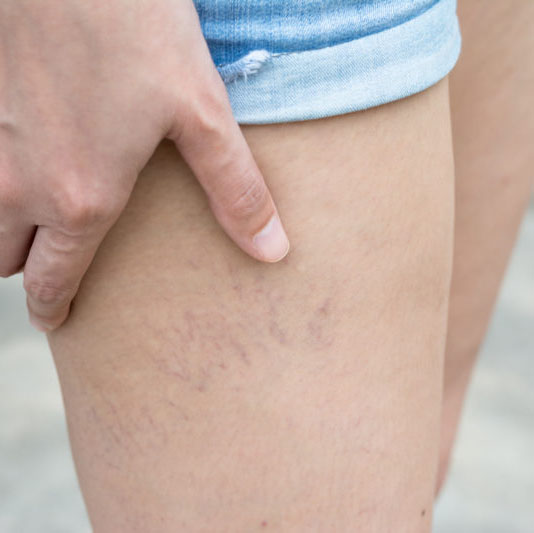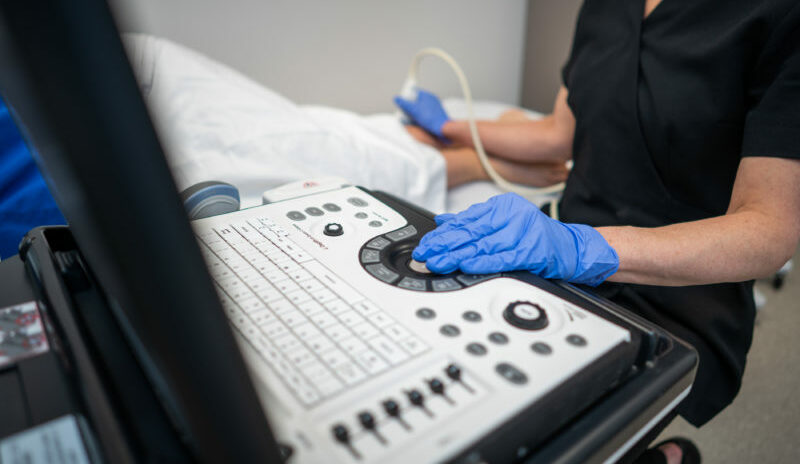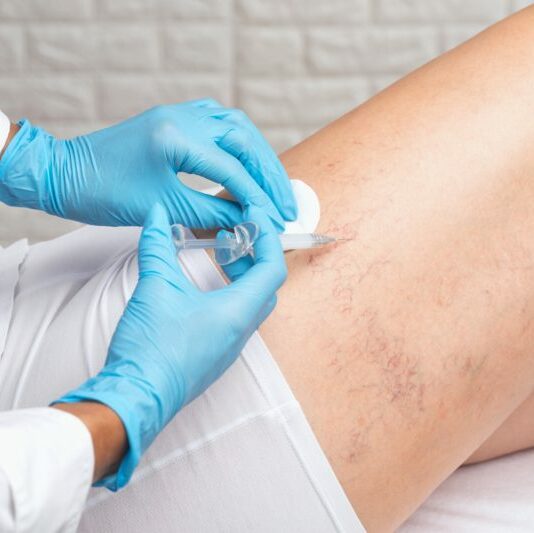Spider Veins
What are spider veins?
Spider veins are small surface blood vessels that are visible on the skin surface. Unlike larger varicose veins, they do not bulge out. They will range in colour from red to purple and may look like bursts or lines. Being aware of them and how they look is the main concern for most people.
This is the term used to describe many types of small skin surface veins. Very small, fine and bright red veins are also called telangiectasias. When the skin surface veins are slightly deeper and appear purplish, they are also called reticular veins. True spider veins are everything that falls in between telangiectasis and reticular veins. Often, all three of these may be present at the same time.
When these veins are on the face, they’re called facial veins. Often, they are the very small, bright red telangiectasias.

Who gets spider veins?
Contributing factors
Spider veins are very common and increase with age. About half of women will develop them by the age of 50 years.
The main risk factors are: varicose veins, family history and being female. In women, the hormonal influence is very strong and there is a also a strong connection with pregnancy, taking the contraceptive pill and hormone replacement therapy (HRT).
Skin sun damage also causes spider veins and is a common cause of the bight red facial telangiectasias.
What are the symptoms of spider veins?
They’re usually asymptomatic. When symptoms are present, people may notice throbbing, burning, itching and aching.
Women’s periods have a strong effect on the experience of symptoms, with menstruation often being associated with worse symptoms.
Sometimes, spider veins around the ankles and feet may bleed, either spontaneously or as a result of trauma. In these cases, there are usually underlying varicose veins as well.
Investigations
An ultrasound scan is the main investigation for these veins that are associated with varicose veins. Sometimes, a person may only have visible spider veins but an ultrasound scan reveals they are also in the early stages of varicose vein formation.

Ultrasound Scan is Used to See if the Spider Veins are Associated with Varicose Veins.
Treatments
Standard treatments for spider veins
There are two main treatments: sclerotherapy and skin laser. Usually, treatment will require a combination of these.
Sclerotherapy involves the injection of a small amount of irritant into these small veins, which blocks off the veins. It is then reabsorbed by the body.
Laser treatment uses a high-powered vascular laser than can penetrate the skin and target the spider veins. Laser light targets the blood inside the tiny veins, causing them to block off and be reabsorbed by the body.



